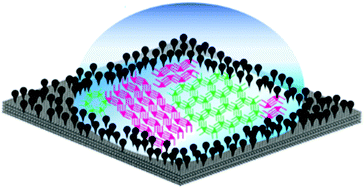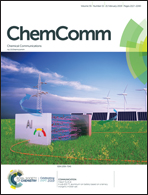Phase selectivity triggered by nanoconfinement: the impact of corral dimensions†
Abstract
By using a novel protocol to spatially confine molecules in well-defined small 2D areas, the so-called nanocorrals, we show using scanning tunneling microscopy (STM) how this kind of confinement affects self-assembled molecular network (SAMN) formation at a liquid–solid interface. The 2D lateral confinement, imposed by the size of the nanocorrals, has a clear impact on the phase selectivity of a molecule that can form both low-density and high-density SAMNs, the high-density phase being promoted by the confinement.



 Please wait while we load your content...
Please wait while we load your content...